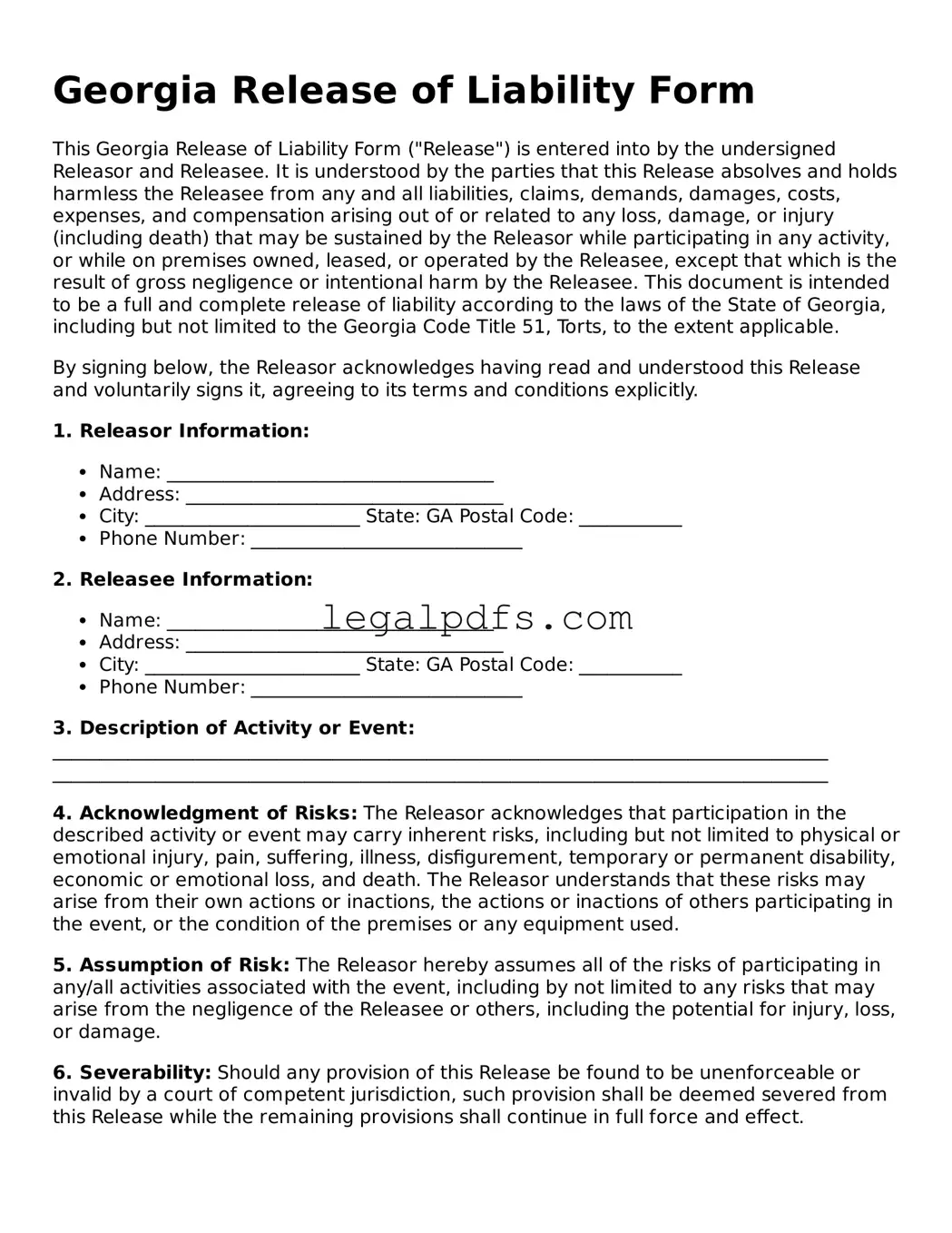Georgia Release of Liability Form
This Georgia Release of Liability Form ("Release") is entered into by the undersigned Releasor and Releasee. It is understood by the parties that this Release absolves and holds harmless the Releasee from any and all liabilities, claims, demands, damages, costs, expenses, and compensation arising out of or related to any loss, damage, or injury (including death) that may be sustained by the Releasor while participating in any activity, or while on premises owned, leased, or operated by the Releasee, except that which is the result of gross negligence or intentional harm by the Releasee. This document is intended to be a full and complete release of liability according to the laws of the State of Georgia, including but not limited to the Georgia Code Title 51, Torts, to the extent applicable.
By signing below, the Releasor acknowledges having read and understood this Release and voluntarily signs it, agreeing to its terms and conditions explicitly.
1. Releasor Information:
- Name: ___________________________________
- Address: __________________________________
- City: _______________________ State: GA Postal Code: ___________
- Phone Number: _____________________________
2. Releasee Information:
- Name: ___________________________________
- Address: __________________________________
- City: _______________________ State: GA Postal Code: ___________
- Phone Number: _____________________________
3. Description of Activity or Event:
___________________________________________________________________________________
___________________________________________________________________________________
4. Acknowledgment of Risks: The Releasor acknowledges that participation in the described activity or event may carry inherent risks, including but not limited to physical or emotional injury, pain, suffering, illness, disfigurement, temporary or permanent disability, economic or emotional loss, and death. The Releasor understands that these risks may arise from their own actions or inactions, the actions or inactions of others participating in the event, or the condition of the premises or any equipment used.
5. Assumption of Risk: The Releasor hereby assumes all of the risks of participating in any/all activities associated with the event, including by not limited to any risks that may arise from the negligence of the Releasee or others, including the potential for injury, loss, or damage.
6. Severability: Should any provision of this Release be found to be unenforceable or invalid by a court of competent jurisdiction, such provision shall be deemed severed from this Release while the remaining provisions shall continue in full force and effect.
7. Governing Law: This Release shall be governed by and construed in accordance with the laws of the State of Georgia, without giving effect to any choice or conflict of law provisions.
______________________________________________
(Signature of Releasor) __________________________
(Date)
______________________________________________
(Signature of Releasee or Authorized Representative) __________________________
(Date)
